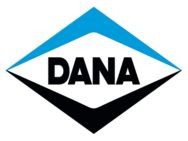This great post has been a long lasting servant, and we recently decided to put out an update. Go ahead and read this too, though – It’s an oldie but a goodie!
After that, read our update: Boom Cranes: History, Parts and Anatomy
Cranes are multi-faceted pieces of apparatus, and while they are capable of some quite incredible feats the way they actually work is based on some pretty straightforward laws of physics. Boom cranes are used to effectively and effortlessly lift heavy and/or awkward to move objects. The crane is most commonly used to hoist weighty equipment and/or materials on construction sites and to load cargo to ships.
Although cranes today use the very latest technology and top grade engineering, the earliest examples of their lifting principle and functionality dates back to the time of the Ancient Greeks. They were industrious and innovative and worked out that by using a lever-fulcrum system heavy loads could be lifted with relative ease.
The basics of how cranes work ““ a heavy load is attached to the short end of the beam. This cargo can then be elevated by relatively little force being applied to the long end of the beam on the opposite side. The “˜lift’ takes place with the assistance of the fulcrum that is situated just below the beam and is designed to provide support.
As the Ancient Greeks improved the crane apparatus more and more features were added, these included: a hand-wound winch complete with cabling that was attached to a pulley. By wrapping cables around the objects in question they were able to lift and move them from one location to another in much the same way as the cranes of today do, although modern equipment is further enhanced by the inclusion of hydraulic systems. Hence the modern equivalents are capable of lifting 1000s of tons with ease.

Boom Crane Parts
The anatomy and terminology of the crane – The boom crane parts are:
- The Boom: The boom is probably the crane’s most outstanding and identifiable feature ““ this is the long, telescopic or fixed arm that is used to move objects
- The Counterweights: The crane’s counterweights are near the cab’s exterior ““ they prevent the crane from becoming unbalanced when lifting heavy loads
- The Jib: The Jib is the familiar lattice-like structure that gives the boom the freedom to extend
- The Rotex Gear: The Rotex gearing affords the crane the ability to rotate its apparatus ““ better enabling it to do its job from awkward standpoints. Hook rollers are also used in some crane applications.
At K&L Cluth we specialize in sales, service and quality parts for industrial machinery like Crane Boom, Jib, and Torque Converters.


























Your documentation and post is excellent. I’ve rarely come across such an easily understandable, well thought out presentation. We commonly work with large construction firms who by definition know the details about various types of equipment, but I hope to develop a similar explanation for our equipment inventory.
Hello
Process and send and Photo Products Catalog
Thanks a lot and respect
Farsad
Great blog.
There are various types of cranes and they have many utilities for them. Here the most common types are gantry cranes, overhead cranes, jib cranes, single girder bridge cranes, and othr attachments. Each one of these types come in different styles for specific applications.
thanks for the information..it helps me a lot..